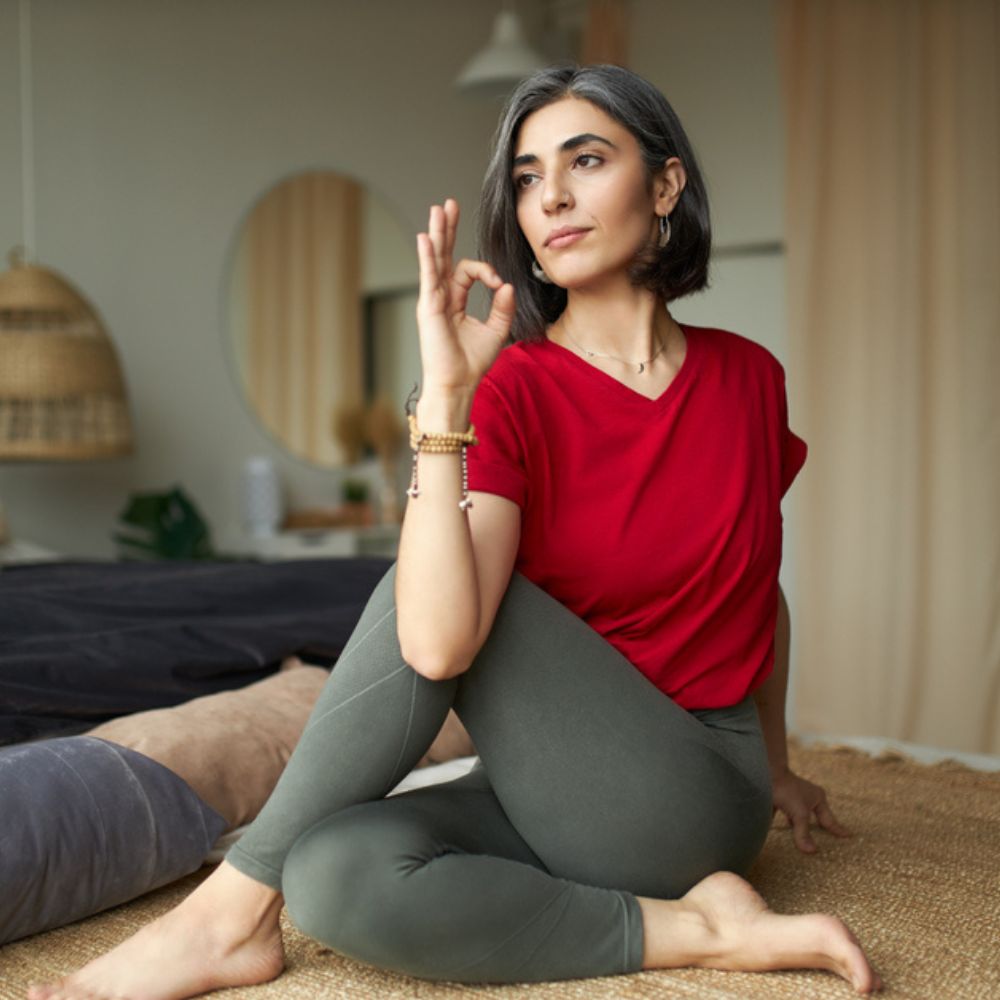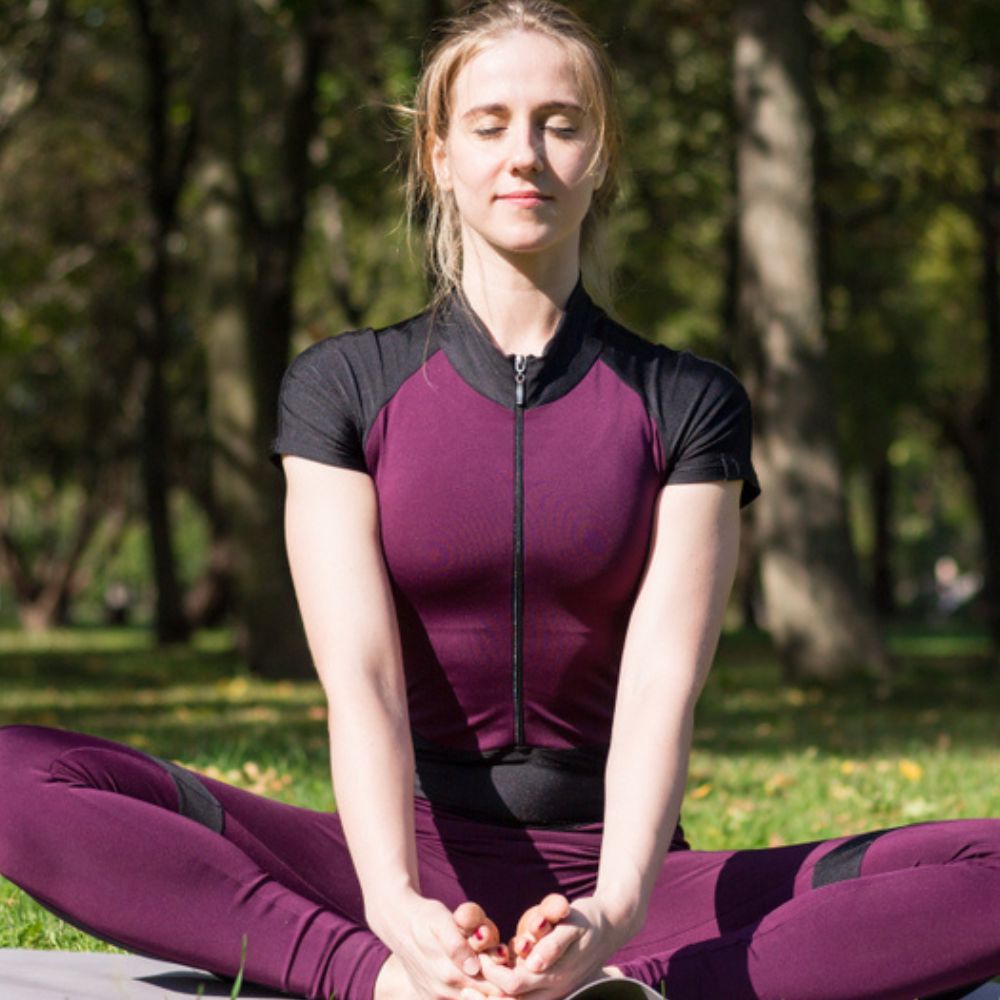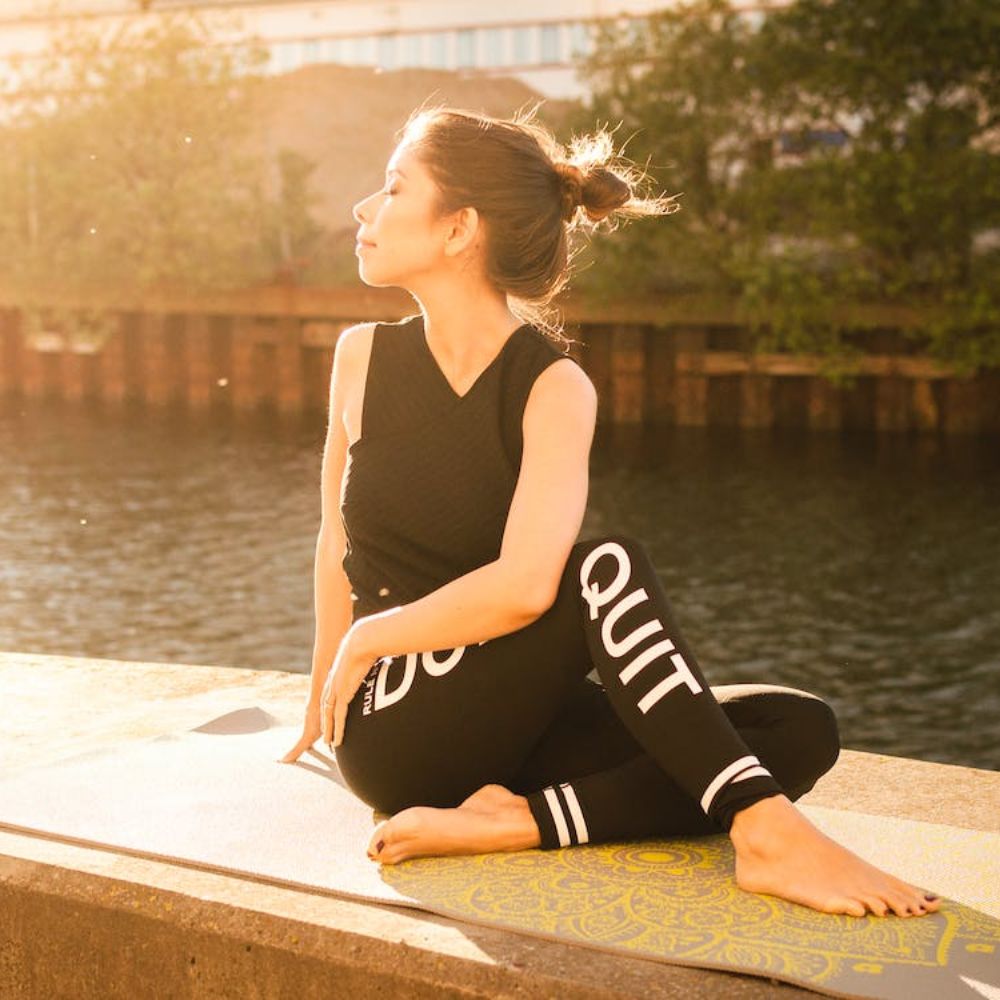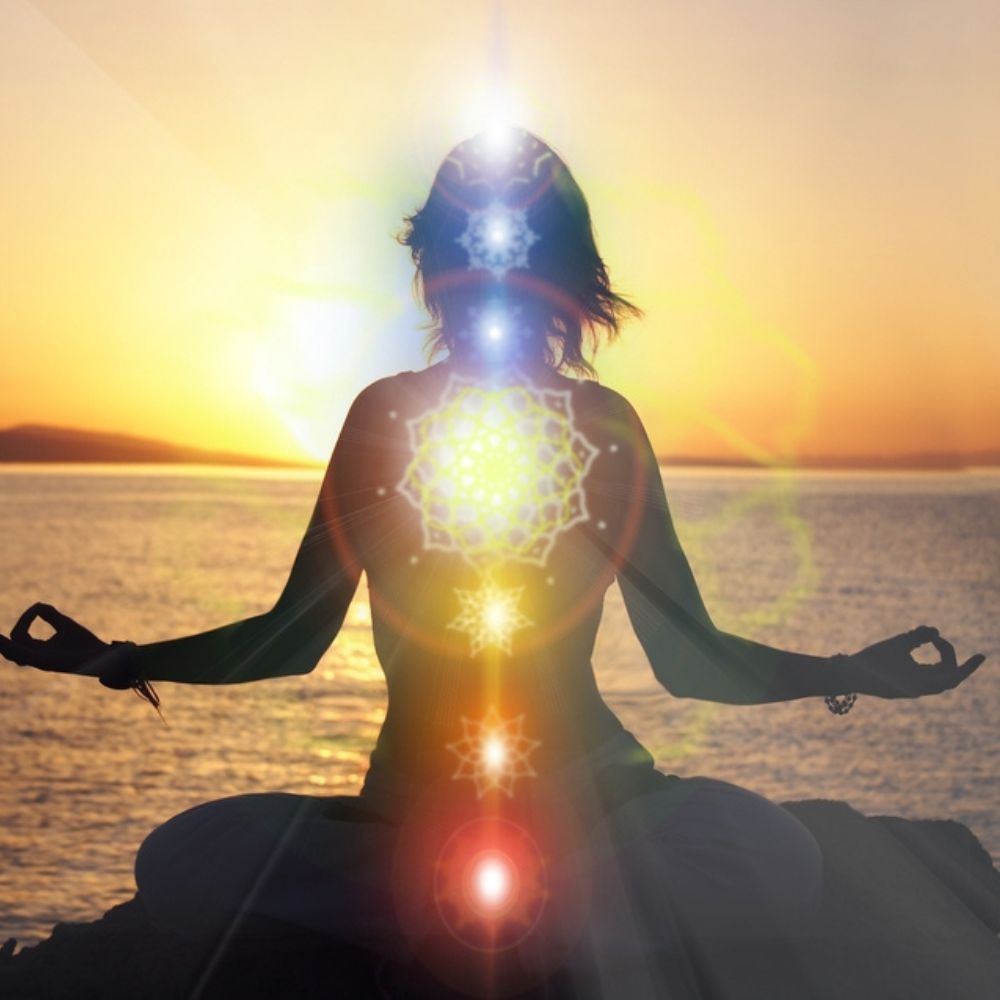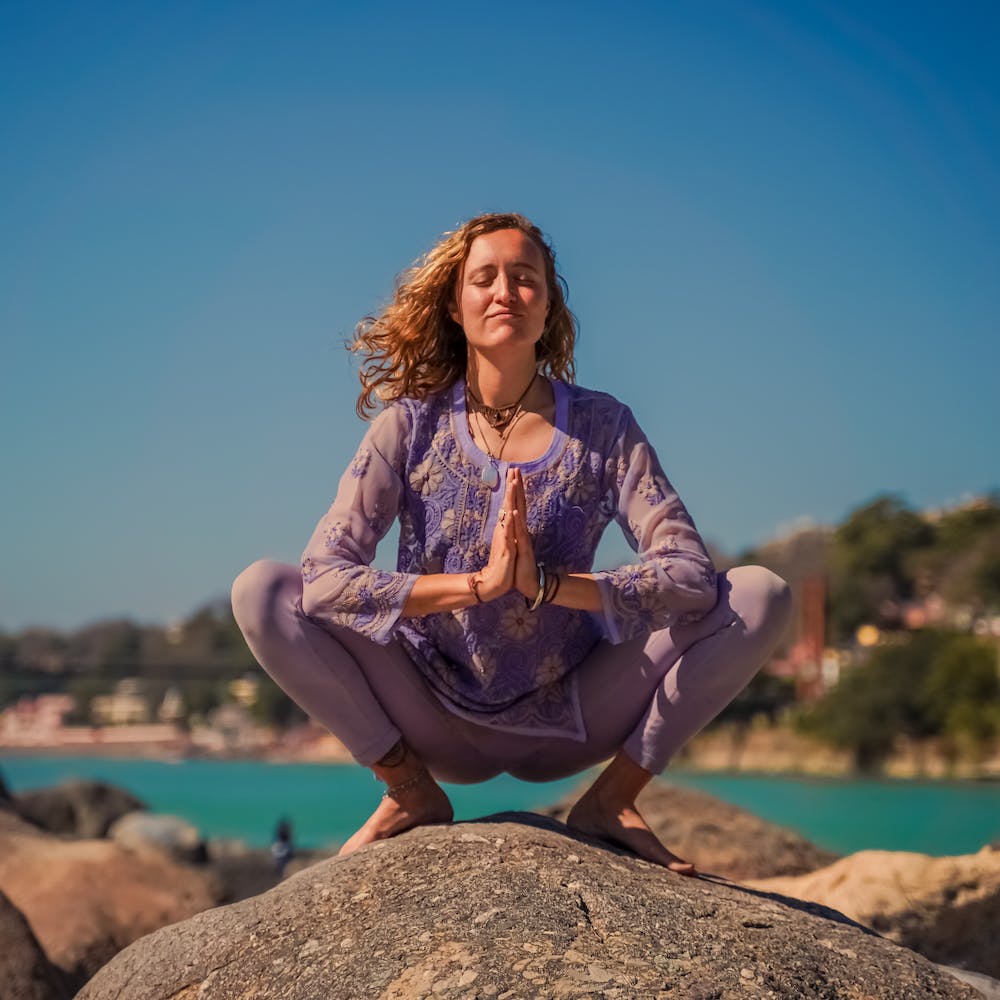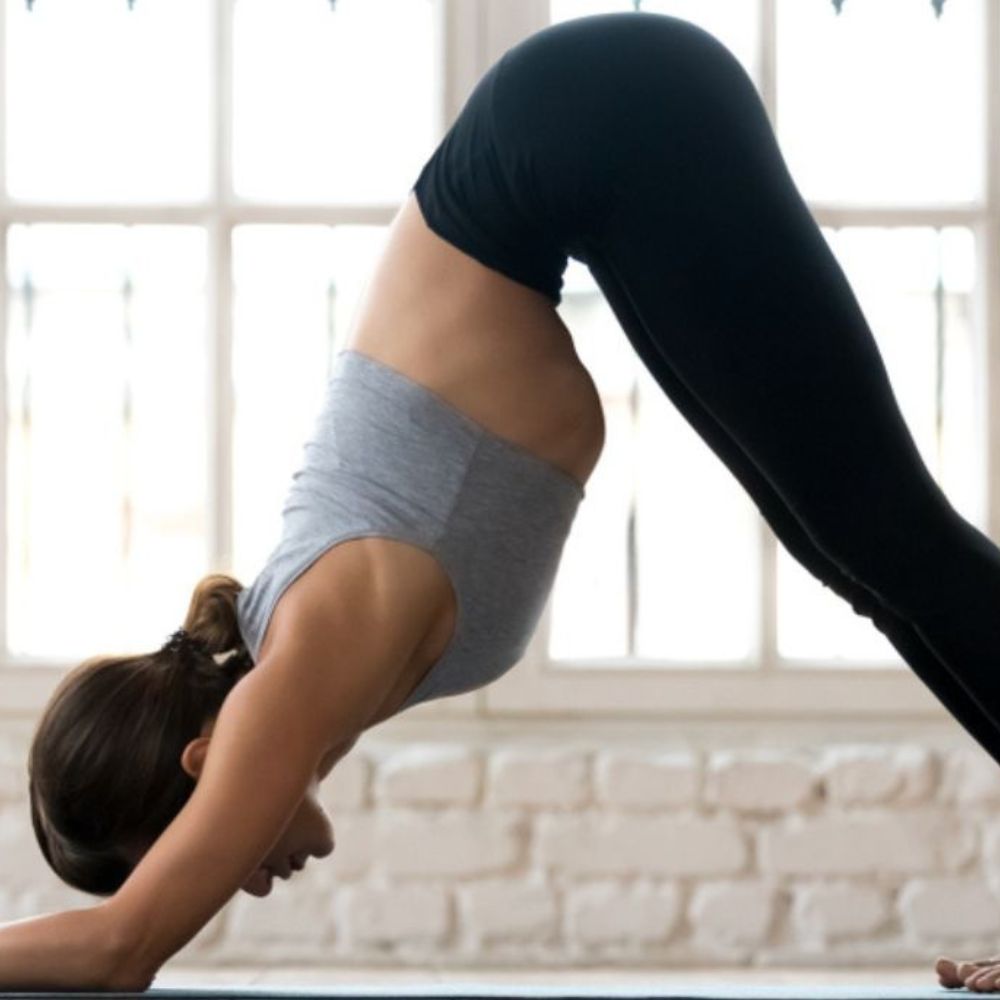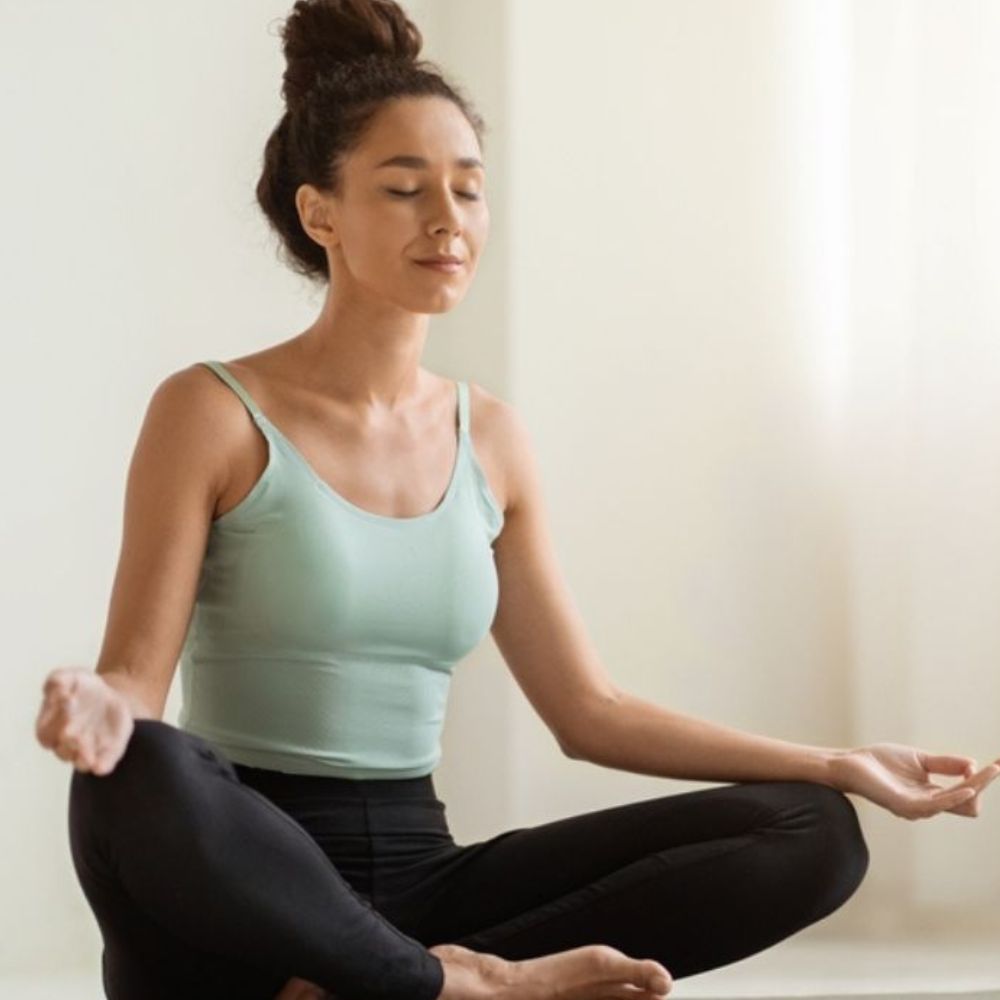Dancer Pose Yoga: How to Do, Benefits, And Variations
The heart-opening Dancer Pose yoga brings together the components of a deep back bend and one-legged balance. Read on to learn more about Natarajasana and its benefits.
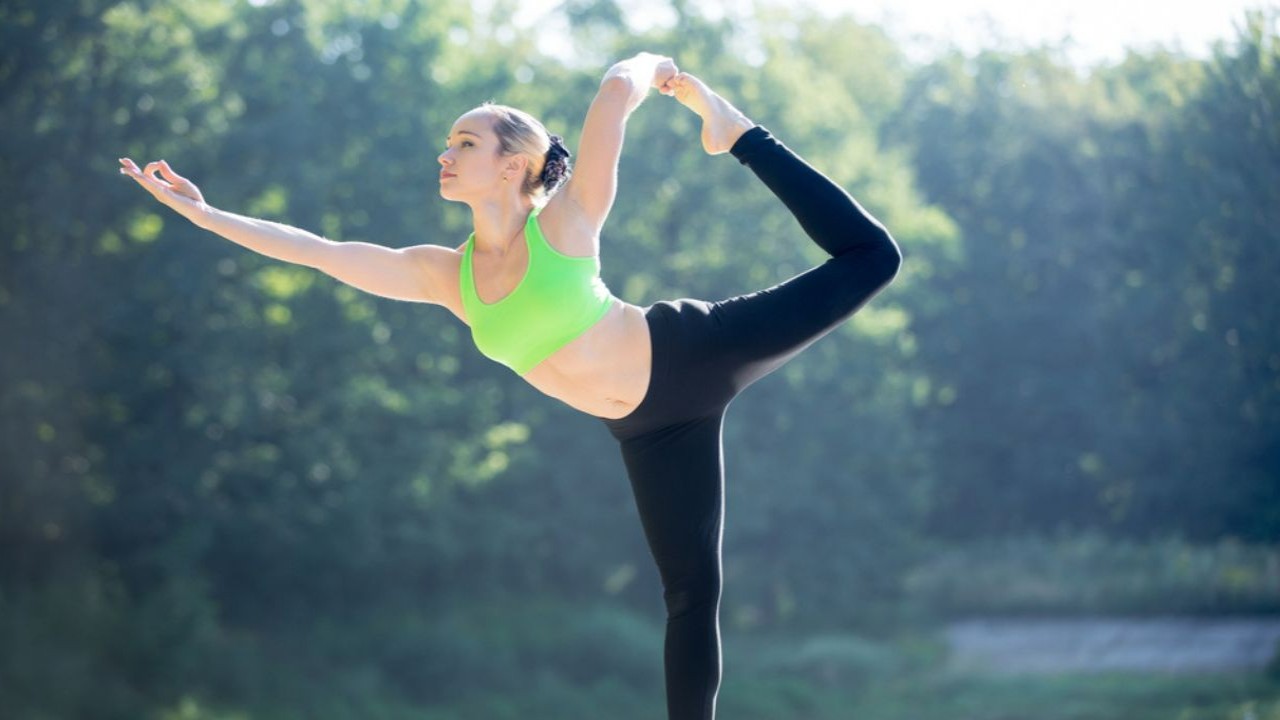
An advanced pose in Hatha yoga practice, Dancer Pose yoga is a revered heart-opener that gloriously embodies the interplay between movement and structure and helps cultivate openness, strength, and beauty in form and action. Like all Hatha yoga, Natarajasana — a heart and hip opening yoga pose, asks us to become aware and mindful — of how we breathe, move, and embrace stillness. Also known as the King Dancer Pose (nata=dance/mime, raja=king, asana=pose), this challenging intermediate/advanced asana symbolizes the dance of Shiva, the Lord of Dance.
Casey Castro, a senior Yoga Teacher and the founder of Sydney Yoga Collective says, “Natarajasana translates to Lord of The Dance, and is a tribute to Lord Shiva, the god of mystical stillness, amongst other things. This asana requires a great deal of balance and is recommended to start off with a wall for support. Working through other standing poses and balancing poses such as virabhadrasana 3 and ardha chandrasana first will be of benefit.”
Our contributor Anna Passalacqua, a certified yoga therapist, and yoga teacher, says, “Natarajasana, or Lord of the Dance Pose, isn’t right for everyone. It’s a deep backbend that requires significant flexibility, as well as underlying strength and balance. Mastering foundational poses that build flexibility, strength, and balance can be a sign that you may be able to try Natarajasana. A qualified yoga instructor may also be able to give you guidance on practicing Natarajasana.”
According to tantric lore, Shiva performed his dance at the mystical center of the universe and combined tandava ( a fierce and violent dance to destroy self-limiting awareness) and lasya (a gentle and lyric dance to reveal the beautiful and tender side of existence). This center of the universe correlates with the center of the human macrocosm — the heart.
In practicing Natarajasana, you invite conscious awareness into your heart as you open it. The interplay of duality in Shiva’s dance comes through as you are asked to be at ease yet stable, non-attached yet committed, and at peace yet completely engaged.
Read on to explore this dynamic asana that embodies the interplay of movement and structure gloriously.
A Brief Overview of Dancer Pose (Natarajasana)

Named after the Lord of Dance, Shiva (or Nataraja), Dancer Pose Yoga is about finding balance and calm amidst chaos. Natarajasana involves deep back bending and balancing, which can be achieved through practice, patience, and perseverance.
The challenge Dancer Pose presents lies in the combination of a deep back bend with a one-legged balancing pose. As one of the most advanced postures in Hatha yoga, it takes time and practicing a series of build-up poses to cultivate but once you do, you find that the benefits are manifold.
For example, you can practice the Cow Face Pose to stretch and the Tree Pose for balance before you move on to Natarajasana.
This challenging heart and hip opening pose embodies grace, strength, flexibility, and stability and can take your yoga practice to greater heights. There are also multiple health benefits of practicing Dancer Pose — it may help reduce stress, improve posture, build endurance, boost concentration, increase flexibility, and strengthen the lower body, amongst other things.
Ahead, we look at the benefits of Natarajasana in more detail.
Benefits of Dance Pose Yoga (Natarajasana)
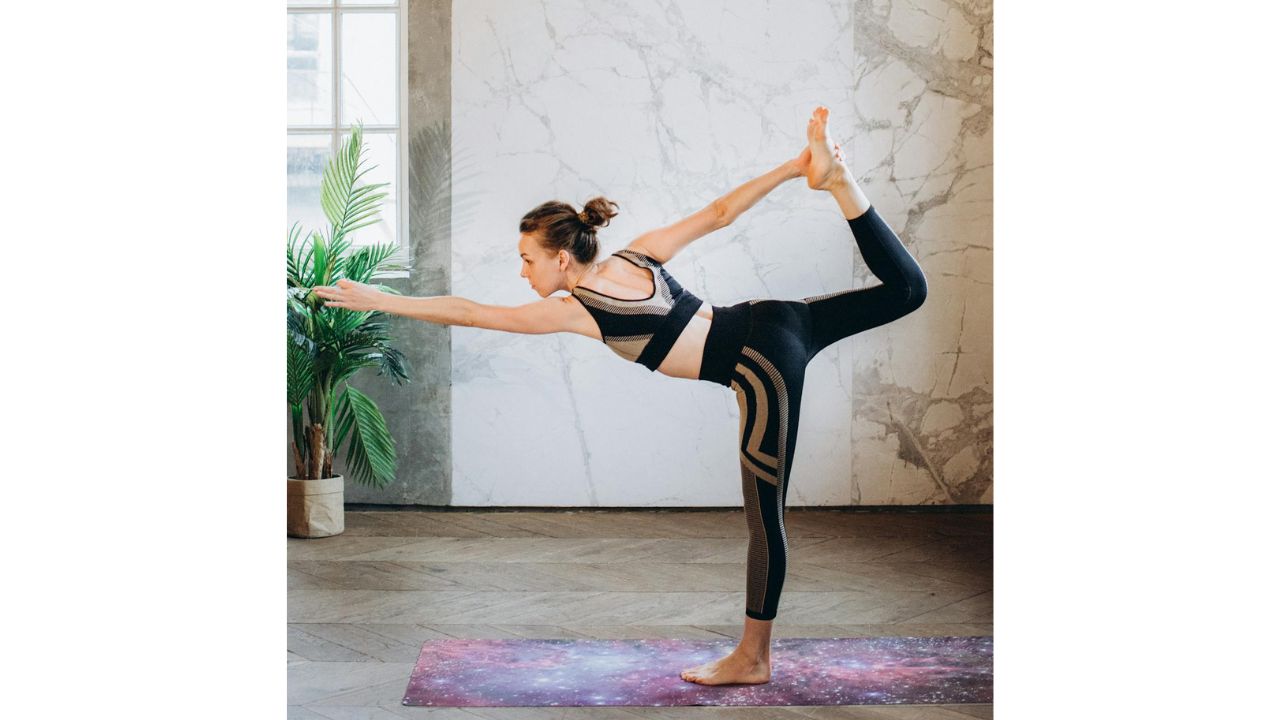
As a hip and heart opener that focuses on balancing and bending, Dance Pose yoga affects the body and mind positively in numerous ways. When practiced regularly, Natarajasana may (1):
1. Improve Flexibility
As you bend your leg behind and balance your whole body on your grounded leg, you strengthen the muscles on the leg and improve the range of motion in the joints. This helps increase flexibility. Moreover, the effect on flexibility is not just limited to the legs. As a hip opener, this asana stretches and activates the psoas (hip muscles) which in turn boosts hip flexibility, increases the range of motion in the hip joints, and facilitates improved movement patterns. In addition, Dancer Pose increases flexibility in the muscles of the upper body such as the biceps, triceps, neck, and shoulder muscles, and boosts the range of motion along the entire spine.
2. Aid Weight Loss
As you engage in Dancer Pose, you activate your lower back, biceps and triceps, gluteus, hamstrings, chest, hips, psoas, and quadriceps. As Natarajasana engages each muscle group in the body, these large muscle groups are activated, which in turn helps you burn calories. Strengthening the muscles also helps boost metabolism and aid in your weight loss goals. It also improves core strength and may help shed belly fat.
3. Boost Blood Circulation
The stretching aspect of Dancer Pose may help boost blood circulation in the body, especially in the abdominal area.
4. Improve Digestion
With age, digestion slows down. Incorporating Natarajasana into your regular yoga routine may help maintain the health of your digestive system. The pose activates the core and massages the abdominal muscles and organs, which can keep them healthy and boost their performance.
5. Enhance Tone and Posture
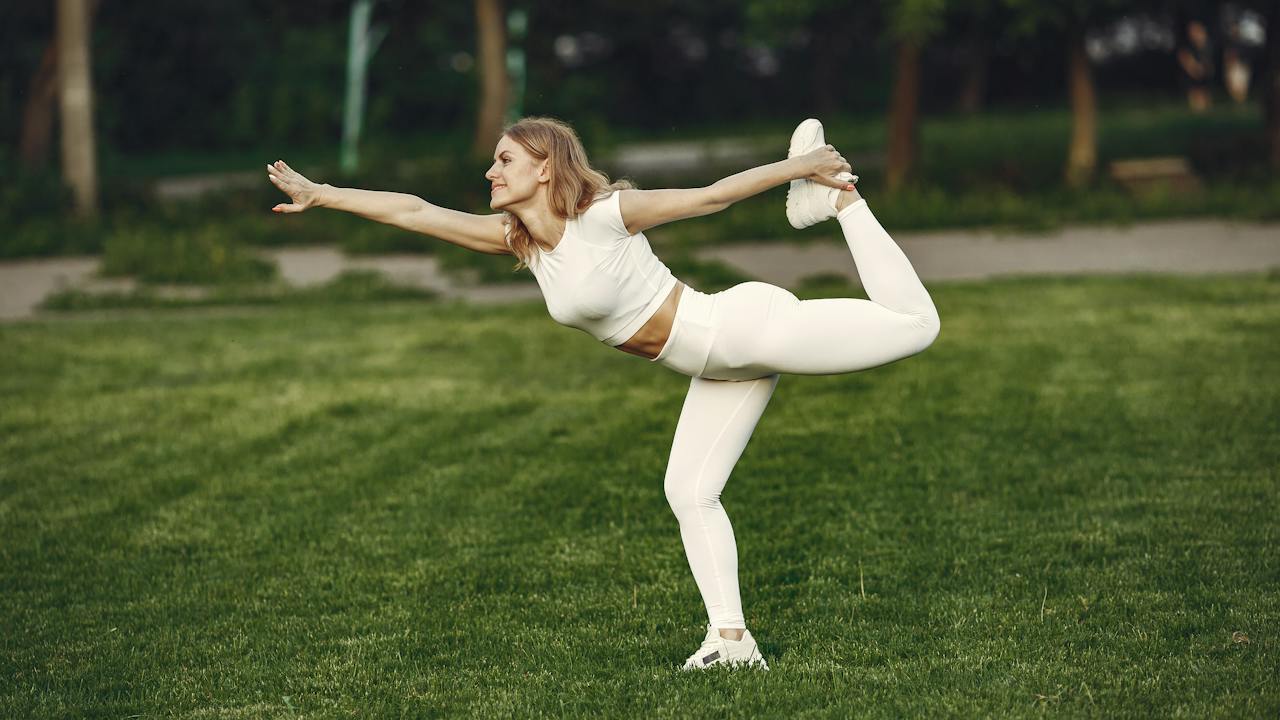
In Natarajasana, the hips are toned through the deep back bend which engages the thighs and the lower back. As the spine is also engaged, the muscles surrounding the column are also toned. The active stretch on the arms and shoulders also helps shed fat in the upper arms and improves shoulder posture.
Besides these benefits, practicing Dancer Pose may help improve endurance and focus, fight tiredness, boost energy levels, bring mental clarity, and relieve stiffness and pain. Read on to learn more about the steps for Natarajasana.
How to Do Dancer Pose Yoga: A Step-by-Step Guide to Natarajasana
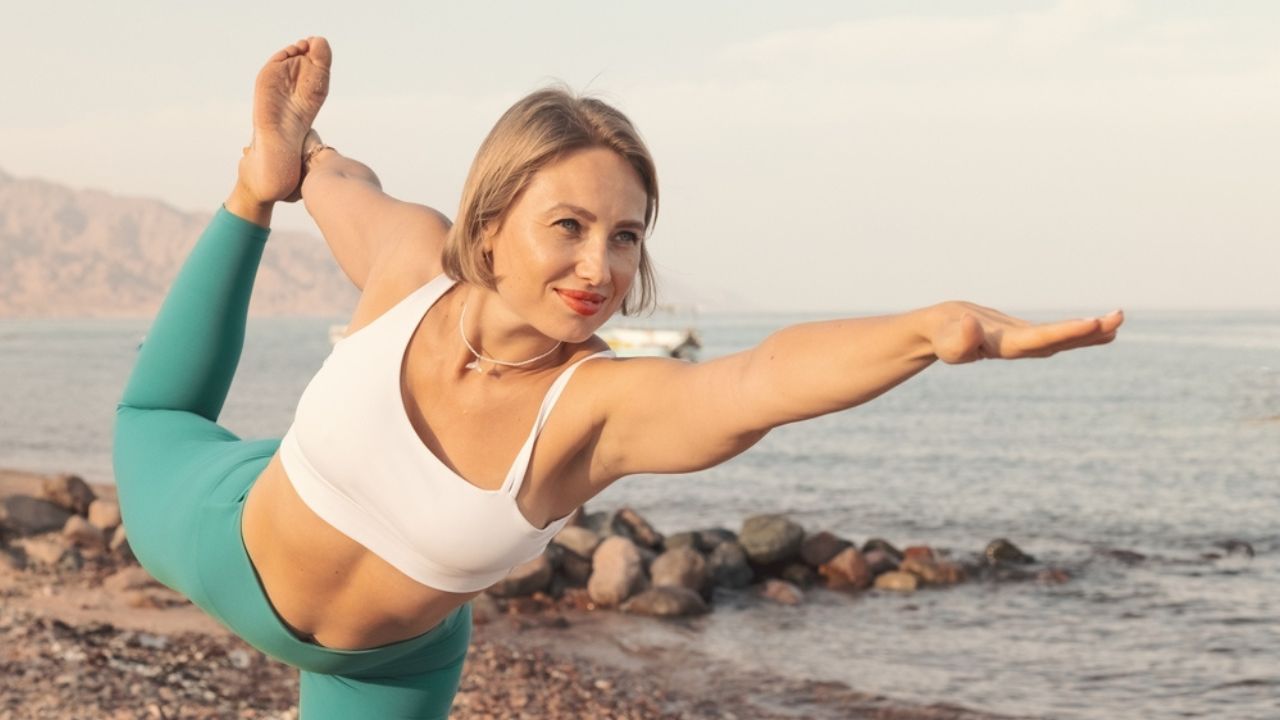
It is recommended to practice Natarajasana after working on preparatory poses that help open the hips, heart, and legs for improved balance and mobility. Backbends such as Cobra Pose, Locust Pose, and Bow Pose are recommended as preparatory poses to help achieve a deep backbend in Natarajasana without risking injury or strain.
Having said that, Dancer Pose is usually done as the last asana in a standing yoga sequence. It is also important to focus on your breath and maintain the required cycle of breath (inhale and exhale) as you move from one step to another. Here are the detailed steps to move into Dancer Pose:
1. Inhale as you stand in Tadasana (Mountain Pose) with your feet close together and exhale expanding your spine, diaphragm, and chest. Ensure that your pelvis and your torso are in alignment.
2. You can take a few breaths as you press down on the mat firmly and evenly through your feet. Keep your toes active.
3. Shift your weight onto your right leg. Keep a slight bend on the standing leg to avoid locking the knee.
4. Inhale as you lift your left foot off the mat to bend the leg at the left knee. Your foot should touch your buttocks.

5. Exhale as you grab the instep of the left foot with your left hand from behind. Your thumb should rest on your left foot’s sole and point towards your toes. Ensure that your hip is completely straight.
6. Check that your torso is in an upright position, your chest is open, and your tailbone is lengthened. Inhale and lift your right arm straight towards the ceiling, keeping it close to your right ear.

7. As you inhale, extend your left leg into the left hand and raise it so that your left thigh comes parallel to the floor.
8. Exhale as you wrap your left index finger and thumb around your left toes.
9. Inhale as you take your chest backward.
10. Exhale as you take the leg higher, moving into a deeper bend. At this point, you can bring your right arm straight in front of you, extending it outwards completely.

11. Hold this pose and slowly inhale and exhale for 4-5 rounds.
12. Inhale and release the leg to come back to Tadasana. Exhale completely.
13. After a few rounds of breathing gently at Tadasana, repeat the breath pattern and movement on the other side.
14. Return to Tadasana after completing the sequence with the right leg and bring your breath back to normal to release and relax.
Modifications and Variations of Dancer Pose Yoga

Finding the perfect bend and balance in Dancer Pose takes practice and even then, some days are better than others, even for intermediate or advanced yogis. To facilitate Natarajasana practice, certain variations can be adopted, such as:
- Dancer Pose with a Chair
You can hold on to a chair with your outstretched arm for support and balance.
- Dancer Pose with Wall Support
Face a wall and rest your outstretched arm against it as you raise the opposite leg with the opposite arm. Ensure that your knee is facing downward as the thigh is stretched to come parallel to the floor.
- Dancer Pose with Strap
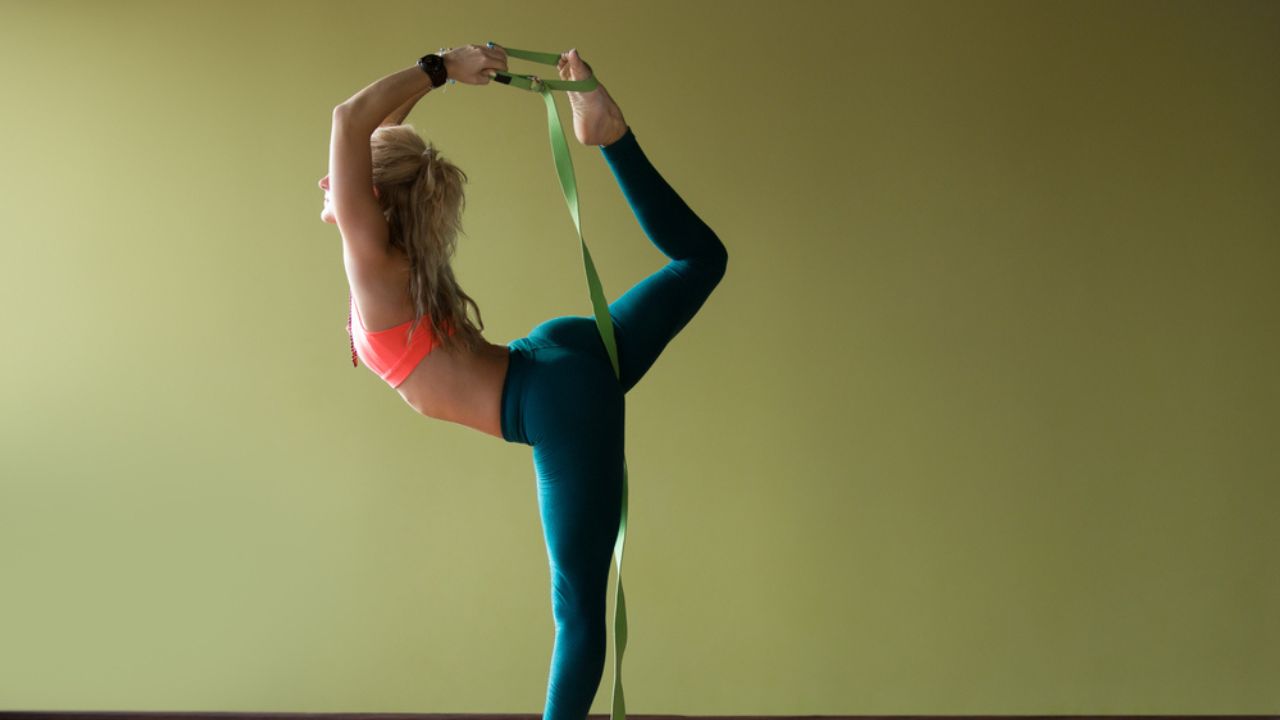
If you cannot reach your leg with your arm as you bend and raise it, you can use a strap. Place a long yoga strap around the foot you are lifting and bring it over your shoulder on the same side to hold it.
These variations can help make the Dancer Pose more accessible to those new to the pose as they build up their stretching, bending, and balancing abilities.
Casey Castro further says, “The advanced modification of natarajasana is bringing the foot to the back of the head and holding with either one or both hands. This requires balance and great extension in the back bend.”
Sharing a pro tip, our contributor Joanne Highland, a certified yoga and barre fitness teacher, says, “For an advanced modification of Natarajasana, instead of catching the inner ankle, you could reach for the foot's outer edge, which gives the shoulders an additional stretch. If balance permits, leaning the torso further forward can also deepen this pose for a greater challenge.”
Mistakes to Avoid While Practicing Dancer Pose (Natarajasana) And Contradictions
While Natarajasana is a beneficial yoga pose to practice, it has certain contradictions. Keep in mind the following before introducing Dancer Pose yoga in your routine:
- Individuals with persistent ankle or back pain should avoid Natarajasana
- Those with balancing problems must take the support of a chair or wall for stability.
- Natarajasana practice must be avoided by those with recent surgery in the abdomen and pregnant or menstruating women.
Hatha yoga, and by extension, Dancer Pose yoga, embraces flow and facilitates the interplay between good form, stable structure, and mindfulness, all within the larger framework of the dynamism that exists in the movement between and within poses. As an intermediate or advanced-level asana, Natarajasana demands practice and perseverance on the road to mastery. The deep back bend in this heart-opening pose combines with the need to find stability and balance — together they benefit the mind and body in numerous ways. Improved digestion, posture, muscle tone, muscle strength, physical, mental, and emotional awareness, and sense of self can be achieved by practicing Dancer Pose. Having said that, it is important to practice this challenging yet rewarding pose under the supervision of a yoga teacher to avoid any risk of injury.
Contributor: Anna Passalacqua, Certified yoga therapist, Co-Founder and Teacher - Breathing Deeply Yoga Therapy
Joanne Highland, Certified yoga and barre fitness teacher
ALSO READ: Lizard Pose: Boost Your Yoga Routine with Deep Hip Openers





 JOIN OUR WHATSAPP CHANNEL
JOIN OUR WHATSAPP CHANNEL






















































































